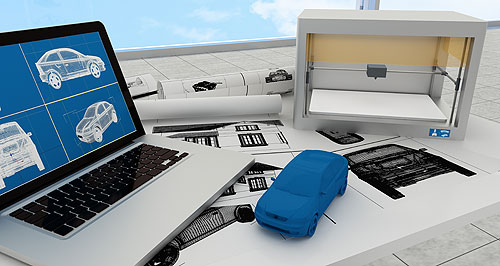Make / Model Search
News - General News - Technology3D printing dangerNew dimension: Three-dimensional printing could cause headaches for car-makers and parts-makers, according to a leading intellectual property lawyer. Copying a new part is one thing, but will the new part be safe?17 Jul 2015 By IAN PORTER THE rapid evolution of three-dimensional printing technology has made it possible for small businesses such as repair shops and individuals to own their own 3D printer, but there are many risks involved with making replacement parts according to a leading intellectual property (IP) lawyer. Justin Senescall, an Australian partner in Bird & Bird’s intellectual property group also claims that car-makers may need to consider more than just existing IP legislation if they want to protect their unique designs. The rapid decline in the cost of 3D printers has seen them move from the car-makers’ development laboratories to the production lines and, in some cases, to dealer repair departments. “For car companies and repair shops the ability to remotely print parts on demand can streamline supply chains and take costs out of the business,” Mr Senescall said. “However, the car-makers may shortly have to find a way to deal with unauthorised or flawed parts produced on a 3D printer by small businesses. “Users of 3D printers need to carefully consider a range of legal issues when deploying 3D printing solutions,” he said. Mr Senescall said people using 3D printers downstream from the car-makers needed to be able to establish whether the 3D blueprint they were using was genuine. They also need to understand what the risks are if they simply scanned a part and created their own blueprint. Mr Senescall said many people believed that simply changing the scanned blueprint by adding something or altering it slightly would avoid copyright or design infringement. “But I think that, in addition to potential intellectual property infringement, what that raises is all of the quality issues. “We would be relying on parts that haven’t been through the quality control process that genuine parts have.” He cited the example of a northern European supercar manufacturer that was 3D printing fans for its turbochargers, which are sourced from a parts manufacturer in the first place. “I am sure there was a requirement for them to make some changes to the part.”“They may not know the exact tolerances or the actual measurements of what they are trying to replicate, so I think from a quality perspective, there is a risk there. “The turbo might come out 89 per cent the way they want it and they still to need to make some refinements to it. “Those sort of parts being supplied to a spare parts manufacturer, where somebody is having a go on their printer, is still missing that 11 per cent refinement that might mean it catches on fire or causes other problems.” Car-makers, too, needed to ensure that their designs were not infringed, according to Mr Senescall. He said from a legal point of view, something copied from a blueprint or the original CAD (computer aided design) drawings could be protected under copyright law. “The other recourse the owner of the designs has is through design registration, but registering designs for so many parts might be a little difficult as well.” However, there is more than just spare parts revenue at stake for the car-makers, Mr Senescall said. “I think the main issue is quality control and not so much being concerned with a classic car enthusiast like Jay Leno, who might make one piece that is no longer available for a 70-year-old vehicle with his 3D printer. “The danger is when printing is on a larger scale. If someone is in a car club and somebody decides to manufacture a number of parts, then everybody will keep quiet and it won’t come to light. “It’s about ensuring the quality of the entire product. “You get to the position where, if there is a vehicle involved in an accident after it has had those parts installed in it, who is liable? “The manufacturer would probably put their hand up at that point and deny liability because it was not a genuine part.”  Read more |
Click to shareGeneral News articlesResearch General News Motor industry news |











Facebook Twitter Instagram